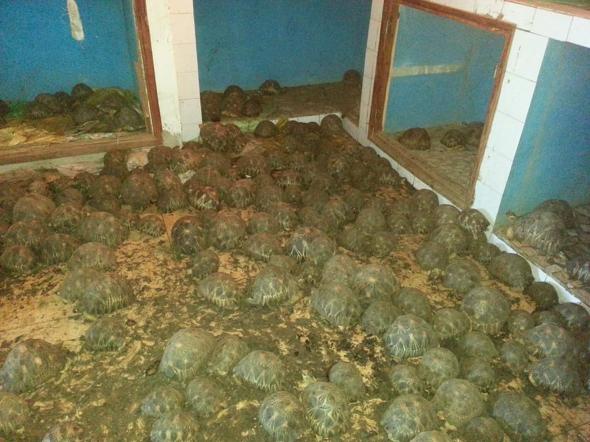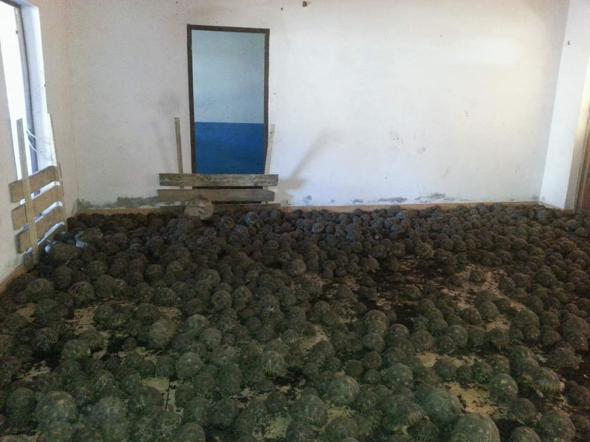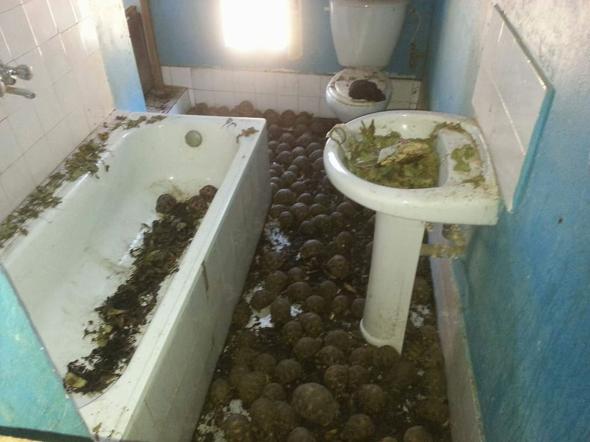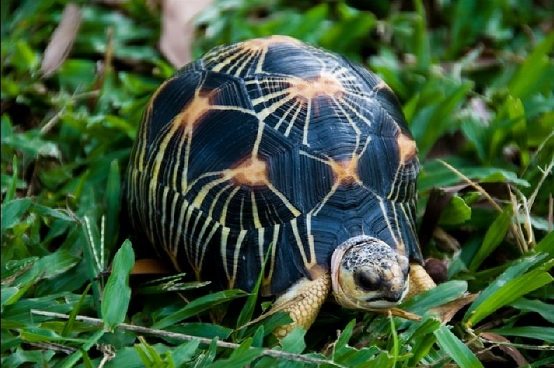When Soary Randrianjafizanaka noticed a terrible smell coming from a building in Toliara, Madagascar, she certainly wasn’t expecting to come upon anything like this.
As regional head of Madagascar’s environmental agency, Soary was sent to investigate the smell by police. When she opened the door, she saw something that she had never seen in all of her years with the agency: thousands of radiated tortoises, an endangered species, covered the entire floor.

The smell was the built-up urine and feces of the thousands of tortoises.
“You cannot imagine. It was so awful,” she told National Geographic. “They had tortoises in the bathroom, in the kitchen, everywhere in the house.”
After counting all of the tortoises, Soary’s team found that there were 9,888 live radiated tortoises and 180 dead ones. Using six trucks, Soary and her team painstakingly rescued the tortoises and transported them Turtle Village, a private wildlife rehabilitation facility 18 miles away.

Na Aina Tiana Rakotoarisoa, a veterinarian at Turtle Village, was sad when 574 more tortoises died in the weeks after they arrived at the facility due to dehydration or infection. Thankfully, the remaining tortoises are now fully recovered for the most part.
Rick Hudson, president of the U.S.-based Turtle Survival Alliance, is helping with the rescue efforts, and he explained that the smaller and medium-sized tortoises would likely have been smuggled out of the country. He is pretty sure that an organized crime ring made up of more than three people was behind this.
“We don’t know exactly who the big person is, but we know there’s a big boss,” he said.

National Geographic states that “taking radiated tortoises from the forests is illegal in Madagascar, and a treaty signed by 182 countries and the European Union bans commercial trade of the species.”
Radiated tortoises are known for the yellow star pattern, which makes them be targeted by poachers. They can be sold as bush meat or taken to SE Asia or China where they are sold to reptile collectors. There were 6 million tortoises in the world in 2013, but that number has plummeted to 3 million today, making them be dubbed “critically endangered.”

“In 2015 authorities confiscated 453 live radiated tortoises from Madagascar’s Ivato International Airport, for example, and 316 were seized in southeast China in 2016 as part of a scheme involving an airport employee who snuck them to his apartment after they arrived from Madagascar,” reports National Geographic.
To find out more about this endangered species, you can go to the IUCN website. SHARE this story so your friends and family can learn about this as well!
COMMENTS POLICY: We have no tolerance for messages of violence, racism, vulgarity, obscenity or other such discourteous behavior. Thank you for contributing to a respectful and useful online dialogue.